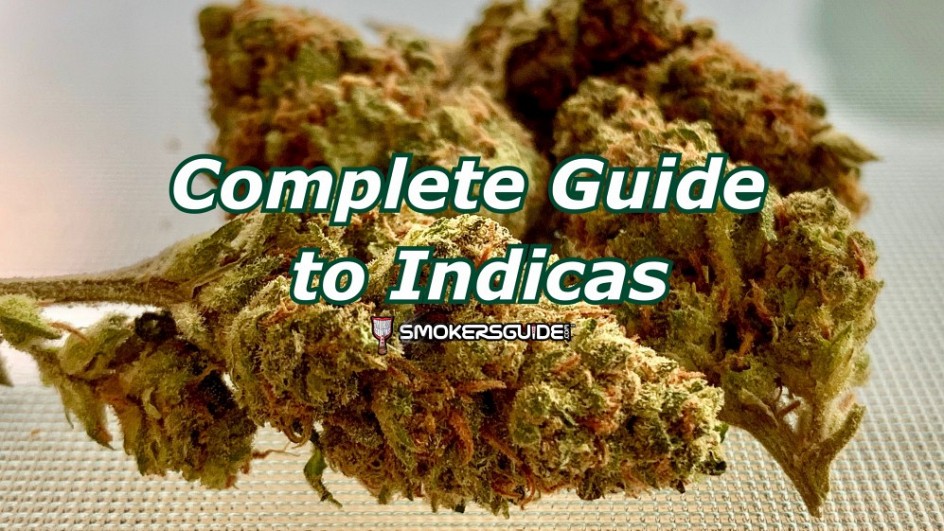One area that is a constant source of confusion is the different species and strains.
Most people have heard of indica and sativa. They are the two primary species of cannabis, although there is also a third called ruderalis. Each of these species has its own story to tell and its own distinct characteristics. Here, we zero in on indicas.
Appearance and origins
Cannabis plants all have a broadly recognizable form, but if you were to place an indica and a sativa plant side by side, you would notice the indica is smaller, more bushy and has leaves that are short and rounded, compared to the longer, thinner ones on the sativa.
Part of that difference comes down to their origins. Indicas grow naturally in the rugged and mountainous regions of the Middle East and Asia, in nations that include Turkey, Afghanistan and Pakistan. This background information is important to know when cultivating plants at home, as we shall see in a moment.
Typical effects
This is another area in which there is plenty of rumor and misinformation, not least because most commercially produced strains of cannabis are hybrids of indica and sativa, making generalizations even less relevant. None the less, there is certain anecdotal evidence to support the common belief that indicas engender feelings of calm and tranquility, while sativas promote euphoria and are more likely to get you giggling uncontrollably.
For example, the Northern Lights strain is one of the classic indica-dominant varieties and is one of the best for chilling out. Many also say it has therapeutic benefits and can help with stress or depression, although the evidence to support this is still largely anecdotal at present.
Across the board, indicas have slightly higher levels of CBD and lower THC than their sativa cousins. However, these are averages across dozens of strains, so it is unproductive to generalize too much.
Cultivation tips
Those clues as to indica’s origins earlier should tell you one thing – it grows in the harshest of environments. Surely that will mean growing it yourself will be a breeze? Unfortunately, things are not quite that simple, although indicas are easier, faster and less “fussy” to grow than sativas, and so are usually the best choice for inexperienced growers.
It is a myth, though, to suggest you don’t need to bother about maintaining the correct light, temperature and humidity. Sure, indica will grow on a bleak Tibetan mountainside, but the thin, straggly specimens will yield precious little in the way of buds. Ultimately, whatever species or strain of cannabis you choose to grow, you will find that the more assiduously you manage the conditions, the more richly you will be rewarded when the time comes to harvest your crop.
SmokersGuide.com disclaimer:
SmokersGuide.com takes pride in featuring high quality articles to its readers, however does not assume liability for the claims and medical facts presented by the author. Please check with your doctor or medical practitioner, before consuming any products containing CBD, THC, herbs and Smart Products, or any other products recommended here. Make sure to always check for advised dosages, and please keep all THC and CBD products (including vapes, flowers, oils, concentrates or edibles) away from children, animals and any persons who may not desire to consume them. Make sure to clearly mark all products with warnings about the contents, and store all products in locked, child-proof containers, to avoid accidental ingestion. Please check your own country's laws regarding CBD and THC, and make sure shipping is allowed. SmokersGuide.com content is always created in countries where cannabis products are legal, for medicinal and/or for recreational uses. Smokers Guide does not encourage the use of cannabis in countries where its consumption is illegal.




 THC Vapes: What To Look For When Buying Online
THC Vapes: What To Look For When Buying Online  Essential Things To Consider Before Buying Cannabis
Essential Things To Consider Before Buying Cannabis  CBD Vs. THC: How To Incorporate Them Safely Into Your...
CBD Vs. THC: How To Incorporate Them Safely Into Your...  Marijuana 101: How to Tell the Difference Between Mold and...
Marijuana 101: How to Tell the Difference Between Mold and...  The best spots in Tanzania that you need to visit
The best spots in Tanzania that you need to visit  CBD vs THC: which one is right for you?
CBD vs THC: which one is right for you?  Dolato Strain Review
Dolato Strain Review  Your complete guide to indicas
Your complete guide to indicas 

